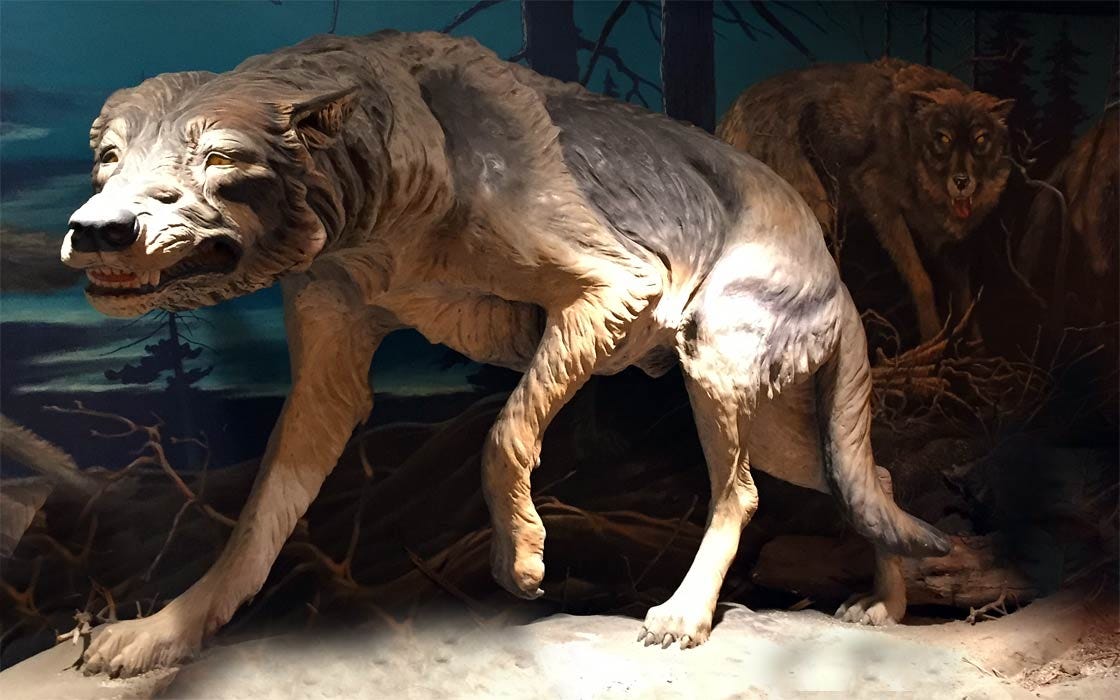THE WOLVES ARE BACK — SORT OF
This week, a startup named Colossal Biosciences unveiled three genetically modified wolf pups engineered with 20 edited genes from the extinct Canis dirus — better known as the dire wolf.
They named them Romulus, Remus, and (of course) Khaleesi. Because nothing says “respecting the ancient wild” like marketing synergy with HBO.
They aren’t true dire wolves. They’re gray wolves, tinkered with in a lab to resemble their extinct cousins: bigger, fluffier, paler, and likely confused as hell. The creatures are being raised at a private, undisclosed facility in the northern United States — because when your $10 billion startup starts printing lifeforms, secrecy suddenly seems very responsible.
SCIENCE OR MYTHMAKING?
Let’s be clear: no one found a frozen dire wolf and thawed it out like a hairy popsicle. What Colossal did was sequence bits of ancient DNA — pulled from a 13,000-year-old tooth and a 72,000-year-old skull — and modify the genome of gray wolves to simulate certain dire-wolf traits.
They managed to alter 20 genes. That’s impressive, until you realize the dire wolf’s full genome differs from gray wolves in potentially thousands of ways. What they created are not true resurrected species — they’re synthetic echoes, built from guesswork and ambition.
And yet, Colossal’s Chief Scientific Officer Beth Shapiro called the pups the “first successful case of de-extinction.” That’s like calling a wax museum figure a successful clone of Abraham Lincoln. You can take a photo with it, but it won’t win a war or pass the Emancipation Proclamation.
THE RITZ-CARLTON WOLF
The wolves — we’ll call them that, for lack of a more accurate term like “franchise-ready gene chimeras” — are living in style. Dr. Shapiro jokes that they’re enjoying “the Ritz Carlton lifestyle of a wolf.”
That may be true. But it also makes the science murky. We can’t observe their behavior in the wild, test their instincts, or gauge how they’d survive in actual ecosystems. What we’ve made are cosmetic wolves, raised in captivity, living on curated diets, and surrounded by cameras — influencers of the Pleistocene.
Geneticist Adam Boyko (who wasn’t involved in the project) summed it up best: “We don’t know what that number is. It could be 20, or it could be 2,000.” He’s talking about the genes that made dire wolves truly dire. Colossal picked 20. The rest? TBD.
WOLFISH INTENTIONS, CORPORATE TEETH
Let’s not kid ourselves. This isn’t about wolves. It’s about proof of concept. It’s about demonstrating that with the right investors and a decent CRISPR setup, you can play God — or at least, play ancestor.
Colossal has been flirting with other extinct icons too: woolly mammoths, the dodo, and maybe whatever gets the most likes on TikTok next.
If this seems noble, ask yourself: what happens when these tools land in the hands of less noble actors? What happens when someone wants to bring back a predator to sell safari tickets, or worse, recreate a species that should never be reborn?
DE-EXTINCTION MEETS CAPITALISM
Colossal’s last funding round gave it a valuation of $10.2 billion. Investors are circling not just because of wolves or mammoths — but because the technology behind them could transform conservation, cloning, bioengineering, and the defense sector. Yes, defense.
If that doesn’t chill your blood, consider this: these wolves were born from dog embryos. Edited in labs. Raised in controlled environments. If you’re not seeing the biotech arms race on the horizon, you’re not looking hard enough.
THE REAL MONSTERS ARE US
The irony, of course, is that gray wolves — actual, real, endangered gray wolves — are still under threat. Congress is debating whether to strip them of federal protections. Sixty environmental groups recently warned that thousands of wolves could be killed if the bill passes.
So while biotech millionaires reimagine the Ice Age for clicks and clout, the wolves we already have are being hunted to death.
But sure. Let’s bring back dire wolves.
Because nothing says “conservation” like resurrecting creatures we helped destroy… while failing to protect the ones still hanging on.
This post has been syndicated from Closer to the Edge, where it was published under this address.

